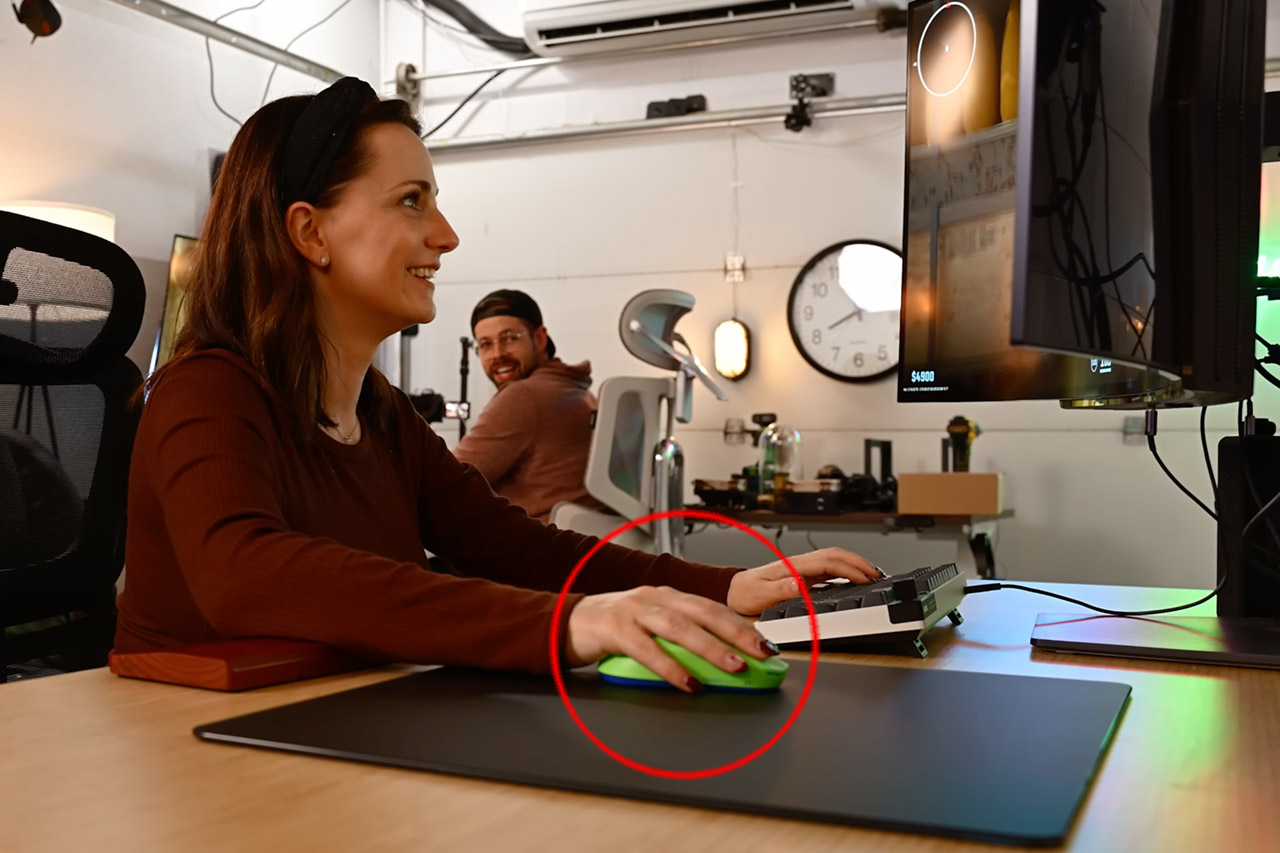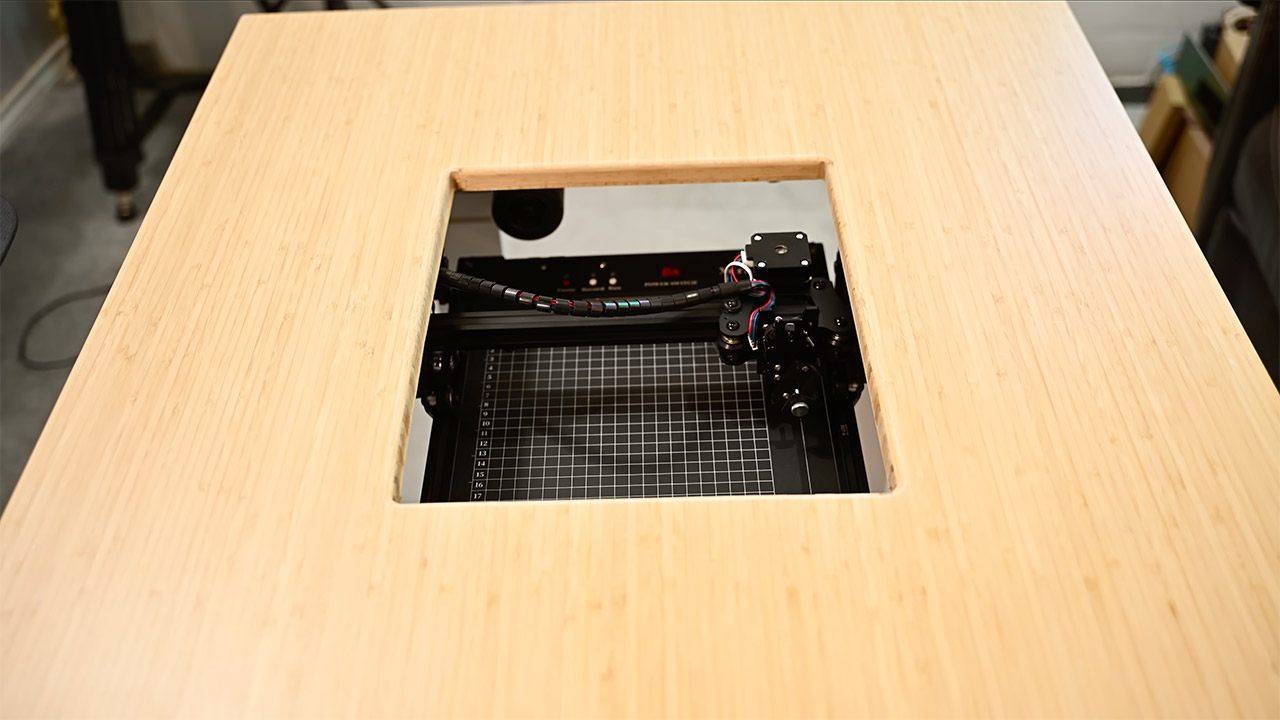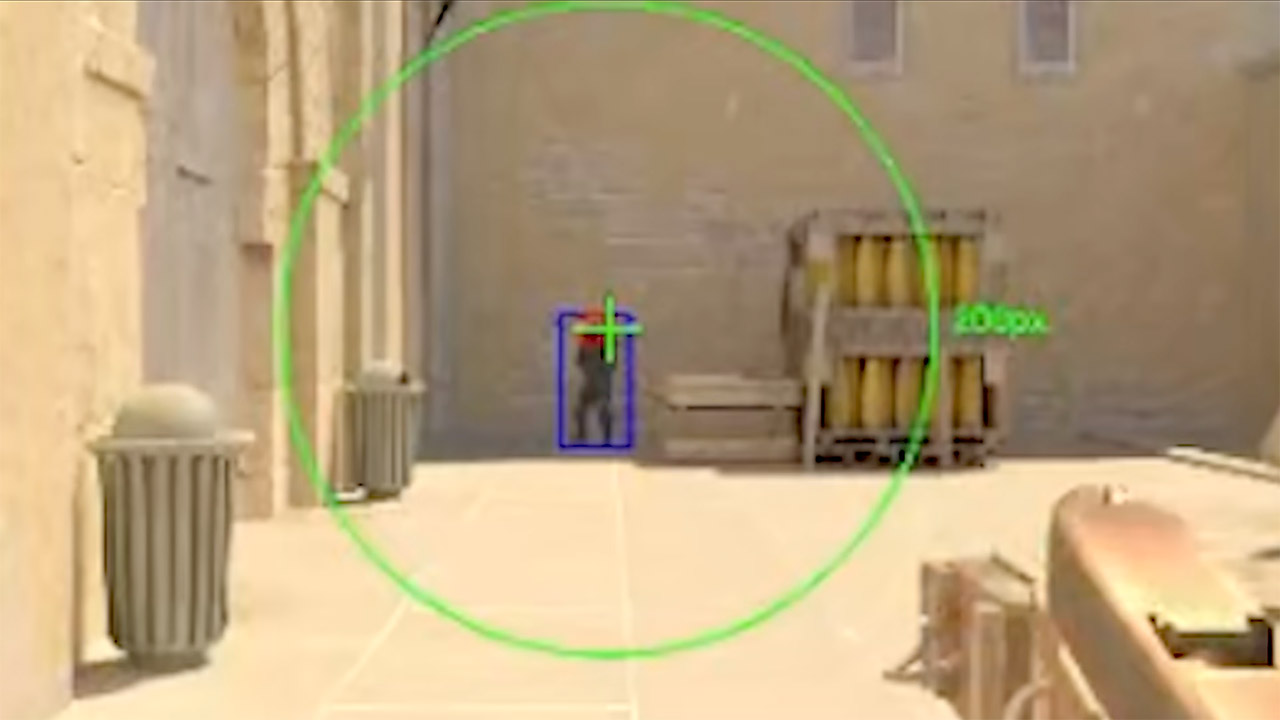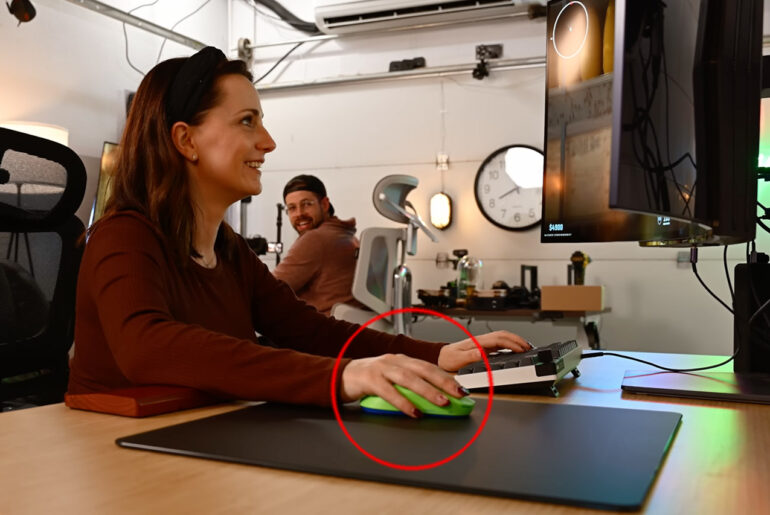
For many, unwinding after a long day means diving into a first-person shooter in which every flick of the wrist determines victory or loss. One maker, known online as ‘Basically Homeless,’ grew tired of all the lopsided multiplayer matches. So, he set out to even the odds with something simple on the surface: a mousepad. What emerged goes far beyond cloth and rubber, turning a basic gaming essential into a subtle guide for your cursor.
Basically Homeless starts from a place most gamers know all too well. He describes himself as skilled enough to frustrate opponents at holiday parties but not nearly at the professional level. Casual players freeze when enemies pop up, their hands betraying them with hesitant swipes. Good gamers like him get kills without breaking a sweat. The gap feels insurmountable, until he decided to bridge it from below the desk.
- Lightweight design: Thanks to an efficient mechanical design, the Logitech G305 gaming mouse weighs in at only 99 grams for high maneuverability
- LIGHTSPEED Wireless: Ultra-fast LIGHTSPEED Wireless technology gives you a lag-free gaming experience. The G305 gamer mouse delivers incredible...
- This wireless gaming mouse features a compact, portable design with convenient built-in storage for included USB wireless receiver. Max. speed: > 400...

Building this started with a desk in his workshop, ruler in hand. He measured the mousepad’s footprint to the millimeter and cut a hole beneath it large enough to allow movement but small enough to disappear with regular use. A standard gaming pad lies on top, secured with Velcro strips for quick replacement. An aluminum rail structure is fastened to the wood underneath, with a flat robot arm spanning the X and Y directions. Stepper motors hum along the rails, shifting the pad left, right, ahead, and back. He recycled elements from a sketching robot kit, which was supposed to lay out thoughts on paper, for this calmer project.

The motors link to a control board via a USB cable, which is listening for instructions. He refers to the language as GRBL, which is a set of simple commands that instruct the system on what to do next. During initial testing, his workspace was filled with the acrid odor of hot solder as he probed the board’s pins to get it to respond in real time. It wasn’t long before (after experimenting with a few lines of test code) did the entire pad begin to move under his fingers. After that, calibration became the ritual he followed every time: giving the motors a couple quick jumpy bursts to get them operating properly, testing for drag, and just making sure everything was precisely aligned flat on his desk.

The control software connects everything together, and it runs on a small Linux PC hidden away somewhere. He had to develop the code in Python, line by line, beginning with simply passing basic commands to the board. The true innovation comes from pairing it with YOLO, a handy little screen-watching tool that searches for your opponent in the game window for you. The application just draws a blue circle on your screen, roughly where your crosshair is. However, have you seen an opponent outside the ring? The program calculates the offset and sends a command to the motors to nudge the pad, which moves the mouse pointer to the center without requiring you to remove your hands from the mouse. Inside the circle, nothing moves, allowing you to regain control as needed.









